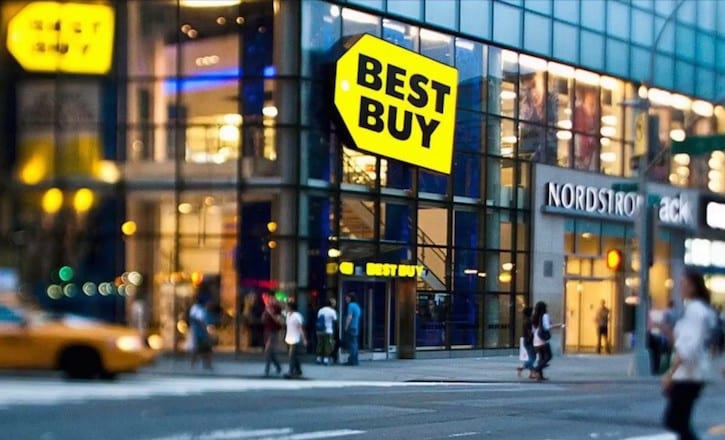About five years ago, Best Buy looked like it was on track to enter the retail graveyard. Fast forward to today, and the big-box electronics chain has rebounded quite nicely. So how did Best Buy pull off such an impressive turnaround? The Los Angeles Times has the scoop on that.

Part of the problem that Best Buy was faced with was that customers were coming in, but they weren’t buying anything. Customers were engaging in a practice known as ‘showrooming,’ meaning that they scoped out goods in person before finding the same item cheaper online. Hubert Joly manned the reins as chief executive in 2012, and he quickly set forth to execute a turnaround plan.
“We don’t see ourselves as a brick-and-mortar retailer, we’re a multichannel retailer,” he notes.
Best Buy improved its own website and mobile capabilities, and he decided to take the step of matching competitor’s prices. That simple move quickly gave Best Buy a little bit of a leg up, as online retailers simply couldn’t match the other services that Best Buy is able to provide for shoppers.
“We had no choice, we had to take price off the table and match online prices,” Joly continued.
That set the wheels in motion for the turnaround, but there were still other areas to address. As a recent report from research firm IBISWorld notes, big ticket electronics sales remains a challenging part of the retail environment.
“While economic conditions are gradually improving and will likely boost consumer spending, individuals are buying fewer of the big-ticket items that sustained rapid growth in the past,” the report reads in part. “Consumer interest in big-ticket items, such as TVs and personal computers, has waned due to market saturation and slowing innovation,”
That news alone would lead you to think Best Buy may be as good as dead in the water, but the company’s overall revamp has helped push that threat aside. Delivery and service options were enhanced, and the company took the proactive step of creating “stores within the stores” in tandem with a number of electronics vendors.
“That enabled Samsung, for instance, to have 1,400 stores in the U.S. in our stores, which would have taken years to build,” Joly continued.
One interesting aside from Best Buy’s turnaround is that Amazon has now realized they need to offer some kind of services with their electronics, including consultations and installations.
“They’re seeing the same thing we’re seeing – that customers need help – and are trying to address that,” Joly continued. “Just looking at a product on the shelf or a site doesn’t necessarily tell you what you can do with it.”
If you can get Amazon to react to you as opposed to the other way around, there’s a good chance you’re on the right track.